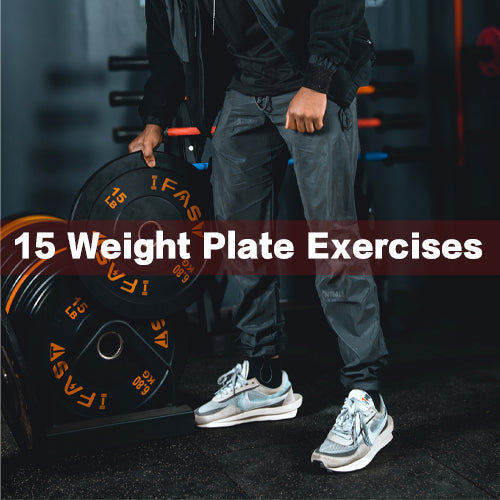Calves, those workhorses of the lower leg, often get neglected in workout routines. But well-developed calves are more than just aesthetically pleasing; they play a crucial role in stability, balance, and explosive power. Strong calves enhance your athletic performance, improve your posture, and even reduce the risk of injuries.
If you’re aiming for well-rounded, strong legs, you can’t afford to neglect your calves. While often considered difficult to develop, with the right exercises and consistency, you can build impressive calf muscles. This guide will walk you through the best calf exercises and provide tips on how to maximize your results.
Here you will know:
Calves Muscle You Should Know
Why Train Your Calves?
11 Best Calf Exercises
- Standing Calf Raise Variations
- Seated/Lying Calf Raise Variations
- Supplemental Calf Training Exercises
Effective Calf Training Techniques
Common Mistakes and How to Avoid Them
Integrating Calf Exercises into Your Workout Routine
FAQs
Let's start!
Calves Muscle You Should Know
Your calf muscles are made up of two main muscles:
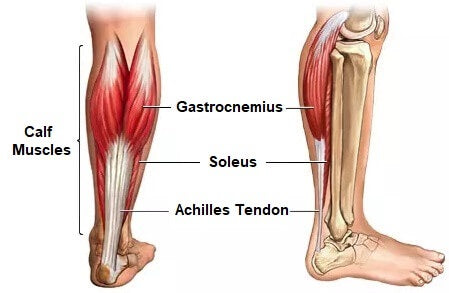
- Gastrocnemius: This is the larger, more visible muscle of the calf. It has two heads that form the bulge visible beneath the skin. The gastrocnemius is responsible for plantar flexion of the foot (pointing your toes downward) and plays a significant role in running and jumping.
- Soleus: This muscle lies beneath the gastrocnemius and is smaller but still essential. The soleus is involved in plantar flexion, especially when the knee is bent, and helps in maintaining posture.
Understanding these muscles will help you perform calf exercises more effectively and ensure you’re targeting the right areas for maximum growth and strength.
Why Train Your Calves?

While calves sometimes get overlooked, incorporating calf exercises into your routine offers a multitude of benefits:
- Improved athletic performance: Strong calves are essential for activities that require explosive power, such as jumping, sprinting, and changing directions quickly.
- Enhanced balance and stability: Strong calves contribute to better overall balance and stability, reducing the risk of falls and injuries.
- Better posture: Well-developed calves help maintain proper alignment of the ankles, knees, and hips, leading to improved posture.
- Reduced injury risk: Strong calves can help absorb impact and support the ankle joint, minimizing the risk of injuries like ankle sprains.
- Aesthetics: Defined calves balance out the proportions of your legs and add a sculpted look to your lower body.
11 Best Calf Exercises: Your Guide to Effective Training
Standing Calf Raise Variations
Where the gastrocnemius (diamond) is heavily targeted:
- Bodyweight Calf Raises
- Barbell or Dumbbell Calf Raises
- Donkey Calf Raises
- Single-Leg Calf Raises
1.Bodyweight Calf Raises
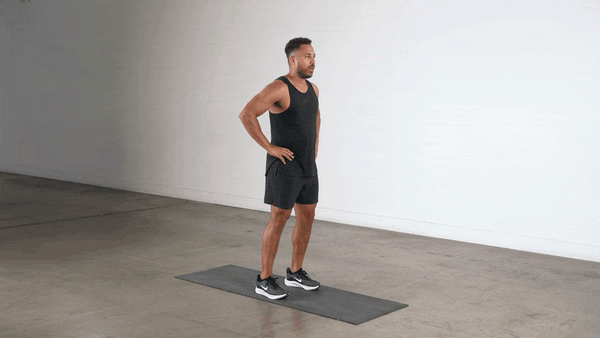
How to Perform:
- Stand with feet shoulder-width apart.
- Raise heels off the ground.
- Hold briefly at the top.
- Lower heels back down.
- Repeat.
Tips:
- Use a wall for balance.
- Move slowly and with control.
2.Barbell or Dumbbell Calf Raises

How to Perform:
- Barbell: Place a barbell across your upper back, holding it with both hands.
- Dumbbells: Hold a dumbbell in each hand at your sides.
- Stand with feet shoulder-width apart, core engaged.
- Raise your heels off the ground, standing on your toes.Hold briefly at the top.
- Lower your heels back to the ground slowly.
- Repeat for the desired number of reps.
Tips:
- Keep movements slow and controlled.
- Ensure full range of motion by fully extending and lowering heels.
- Use a stable surface for balance if needed.
3.Donkey Calf Raises
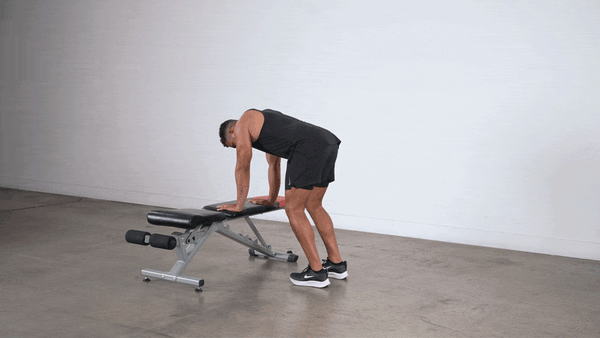
How to Perform:
- Lean forward and place your hands on a sturdy surface at waist height.
- Position your feet shoulder-width apart with your heels hanging off the edge of a raised platform.
- Bend at the hips, keeping your back straight.
- Lift your heels as high as possible, feeling the stretch in your calves.
- Hold the top position briefly before lowering your heels back to the starting position.
- Repeat for the desired number of repetitions.
Tips:
- Use a weight belt or have a partner sit on your lower back for added resistance.
- Keep your core engaged and back straight throughout the exercise.
4.Single-Leg Calf Raises

How to Perform:
- Stand on one leg with the other foot slightly off the ground.
- Perform a calf raise by lifting your heel as high as possible.
- Hold the top position briefly before lowering your heel back to the starting position.
- Repeat for the desired number of repetitions, then switch legs.
Tips:
- Use a wall or chair for balance if needed.
- Add a dumbbell or kettlebell for extra resistance.
These standing or bent-knee calf raise variations maximally stretch the gastrocnemius at the bottom and contract it fully at the top of each rep.
Seated/Lying Calf Raise Variations
Where the soleus (underlying) calf is emphasized:
- Seated Calf Raise
- Leg Press Calf Raises
- Smith Machine Calf Raises
5.Seated Calf Raise
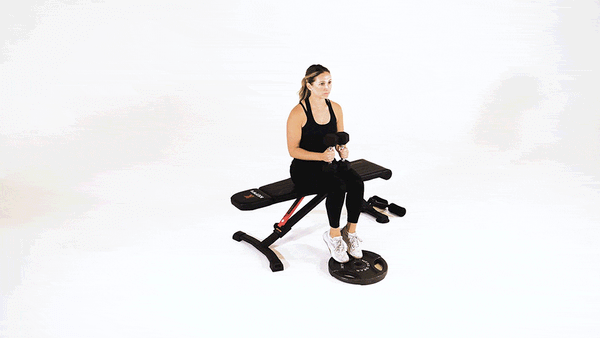
How to Perform:
- Sit on a calf raise machine or weight bench with your feet flat on a platform and knees bent at a 90-degree angle.
- Place a weight on your knees (if not using a machine).
- Lift your heels as high as possible, focusing on contracting the soleus muscle.
- Hold the top position briefly before lowering your heels back to the starting position.
- Repeat for the desired number of repetitions.
Tips:
- Ensure your thighs are parallel to the ground.
- Perform the exercise slowly to maximize muscle engagement.
6.Leg Press Calf Raises

How to Perform:
- Sit on a leg press machine with your feet shoulder-width apart on the lower part of the platform.
- Extend your legs fully but avoid locking your knees.
- Press through the balls of your feet, lifting the weight by extending your ankles.
- Hold the top position briefly, then lower the weight back to the starting position.
- Repeat for the desired number of repetitions.
Tips:
- Focus on using your calf muscles rather than your quads.
- Ensure a full range of motion by lowering the weight as far as comfortable.
7.Smith Machine Calf Raises

How to Perform:
- Position yourself under the bar of a Smith machine with the bar resting on your upper back.
- Place your feet shoulder-width apart on an elevated platform.
- Perform a calf raise by lifting your heels as high as possible.
- Hold the top position briefly, then lower your heels back to the starting position.
- Repeat for the desired number of repetitions.
Tips:
- Ensure the safety stops are set appropriately.
- Focus on a full range of motion and controlled movements.
With knees bent 90 degrees, the soleus works through a deep stretch and contraction as the prime mover compared to standing.
Supplemental Calf Training Exercises
To enhance overall calf development further, incorporate some of these "extra credit" moves:
- Jump Rope
- Stair Calf Raises
- Box Jumps
- Farmer's Walk on Toes
8.Jump Rope
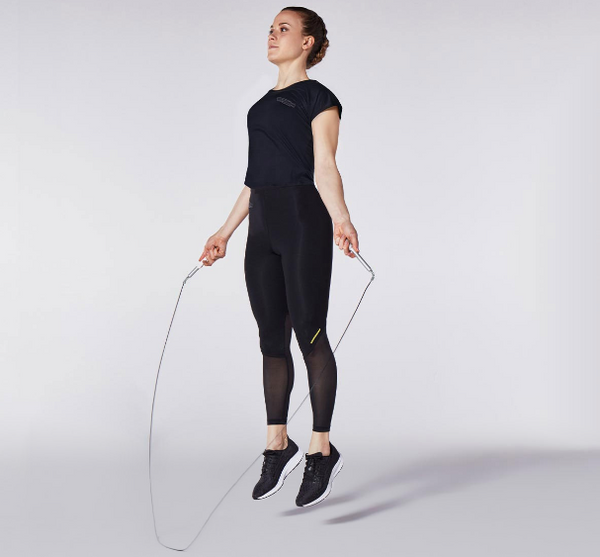
How to Perform:
- Hold the handles of a jump rope with your feet together.
- Swing the rope over your head and jump as it passes under your feet.
- Land on the balls of your feet, keeping your jumps low and quick.
- Continue jumping for the desired duration.
Tips:
- Use a weighted jump rope for added resistance.
- Focus on maintaining a steady rhythm and proper form.
9.Stair Calf Raises

How to Perform:
- Stand on the edge of a stair or step with your heels hanging off.
- Raise your heels as high as possible, standing on your toes.Hold briefly at the top.
- Lower your heels below the step level for a full stretch.
- Repeat for the desired number of reps.
Tips:
- Use a handrail or wall for balance.
- Move slowly and with control.
- Ensure a full range of motion.
10.Box Jumps

How to Perform:
- Stand facing a sturdy box or platform.
- Engage your core and bend your knees slightly.
- Explosively jump onto the box, landing softly on the balls of your feet.
- Step or jump back down to the starting position.
- Repeat for the desired number of repetitions.
Tips:
- Start with a lower box and gradually increase the height as you become more comfortable.
- Focus on landing softly to reduce impact on your joints
11.Farmer's Walk on Toes

How to Perform:
- Hold a heavy dumbbell or kettlebell in each hand.
- Stand on your toes and begin walking forward, keeping your core engaged and posture upright.
- Walk for a set distance or duration.
- Rest and repeat as needed.
Tips:
- Maintain a steady pace and focus on balance.
- Use weights that challenge your grip and calf strength.
These moves uniquely challenge the calves in different planes and under dynamic muscle actions, promoting additional hypertrophy.
Effective Calf Training Techniques
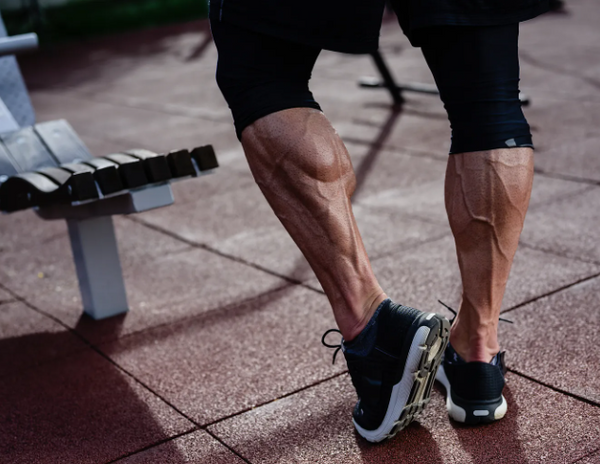
In addition to exercise selection, implementing specific training techniques can help stimulate greater calf growth and development:
High Volume and Frequency
The calves are notoriously stubborn muscles, often requiring higher training volumes and frequencies to elicit growth. Aim for multiple calf sessions per week, with higher rep ranges (15-25 reps) and a focus on achieving a deep stretch and peak contraction.
Progressive Overload
As with any muscle group, continually increasing the demands placed on the calves through added weight, reps, or advanced variations is essential for ongoing progress.
Eccentric Emphasis
The eccentric (lengthening) phase of calf exercises can be a potent stimulus for growth. Techniques like eccentric overload, where you emphasize the lowering portion of the movement, can be highly effective for calf training.
Varied Foot Positions
Changing your foot position (e.g., toes pointed in, out, or straight ahead) can shift the emphasis and muscle recruitment patterns, providing a novel stimulus for growth.
Calves as a Priority
Rather than treating calves as an afterthought, make them a priority by training them early in your workout when you're fresh, or dedicating entire sessions specifically to calf training.
Common Mistakes and How to Avoid Them
Avoid these common mistakes to ensure effective and safe calf training:
- Using Too Much Weight: Lifting too heavy can compromise your form and increase injury risk. Start with manageable weights and progress gradually.
- Limited Range of Motion: Not fully extending or contracting your calves limits muscle engagement. Focus on a complete range of motion.
- Rushed Movements: Performing exercises too quickly reduces their effectiveness. Slow, controlled movements are more beneficial.
- Neglecting Variations: Sticking to one exercise can lead to plateaus. Mix up your routine with different calf exercises.
Factors Affecting Calf Development
Several factors can influence an individual's ability to build substantial calf size and strength:
Genetics: Some individuals are simply predisposed to having naturally larger or smaller calves due to their genetic makeup and muscle fiber composition.
Training History: Lifters who have neglected direct calf training or have focused primarily on other muscle groups may have underdeveloped calves.

Lifestyle and Activity Levels: Individuals who spend significant time on their feet or engage in activities that heavily recruit the calf muscles (e.g., running, hiking, cycling) may have an advantage in calf development.
While genetics play a role, the good news is that with the right training approach, virtually anyone can stimulate significant calf growth and strength improvements.
Integrating Calf Exercises into Your Workout Routine
Here’s how to effectively integrate calf exercises into your fitness plan:
Leg Day Routine: Include calf exercises as part of your leg day workouts alongside quads, hamstrings, and glutes exercises.
Full-Body Routine: Add calf exercises to full-body workouts to ensure balanced lower body development.
Specialized Calf Workouts: Dedicate specific sessions to calf training if you need extra focus on developing this muscle group.
Sample Workout Routine
Leg Day Routine
- Warm-up: 5-10 minutes of light cardio and dynamic stretching.
- Squats: 4 sets of 8-12 reps.
- Deadlifts: 4 sets of 8-12 reps.
- Lunges: 3 sets of 12 reps per leg.
- Standing Calf Raises: 4 sets of 15-20 reps.
- Seated Calf Raises: 3 sets of 15-20 reps.
- Cool-down: Stretching and foam rolling.
Full-Body Routine
- Warm-up: 5-10 minutes of light cardio and dynamic stretching.
- Push-ups: 3 sets of 10-15 reps.
- Pull-ups: 3 sets of 8-12 reps.
- Squats: 4 sets of 8-12 reps.
- Standing Calf Raises: 4 sets of 15-20 reps.
- Plank: 3 sets of 30-60 seconds.
- Cool-down: Stretching and foam rolling.
The Bottom Line
You could develop larger and more powerful calf muscles by using the appropriate methods and exercises. Utilize progressive overload strategies, include efficient calf exercises such as standing calf raises, donkey calf raises, and emphasize correct form as well as technique. Moreover, it is vital to think about flexibility, nutrition, and hydration that will help maintain muscle growth and recovery process. Remain patient with your workout regimen since calves take longer to build up. On the other hand, this guide provides dedication plus hints that will enable you get bigger calf muscles instead of narrow legs in a short while.
FAQs
Q: Should I train calves every day?
A: No, it's generally not recommended to train calves intensely every day. The calves are small muscles that require adequate rest and recovery between sessions. Training them 2-3 times per week with at least one full day of rest is a more effective approach.
Q: Are seated or standing calf raises better?
A: Both seated and standing calf raises have their advantages. Standing raises target the larger gastrocnemius muscle more, while seated raises emphasize the smaller soleus muscle. Incorporating both variations into your routine can provide a well-rounded stimulus.
Q: How many sets and reps should I do for calves?
A: Higher rep ranges (15-25 reps) are often recommended for calf training. As for sets, aim for 3-5 sets per exercise, or accumulate a total of 10-15 sets per week through various calf exercises.
Q: Should I train calves before or after other leg exercises?
A: It's generally recommended to train calves at the end of your leg workout when your larger muscle groups are pre-fatigued. This allows you to focus on maximizing calf recruitment and overload. However, some prefer training calves first when fresh for optimal performance.
Q: Do I need special calf machines or equipment?
A: While machines like the seated and standing calf raise can be effective, you don't necessarily need special equipment. Bodyweight exercises like calf raises, jump rope, and plyometrics can also provide ample stimulus for calf development.
Q: How important is weight for calf training?
A: While added weight can help promote progressive overload, it's not essential for effective calf training. Focusing on achieving a deep stretch, peak contraction, and higher rep ranges with just your bodyweight can still lead to significant calf growth, especially for beginners.

